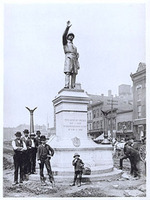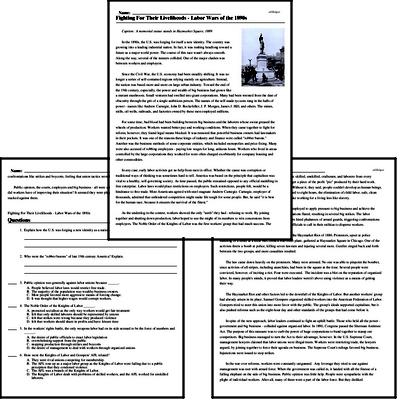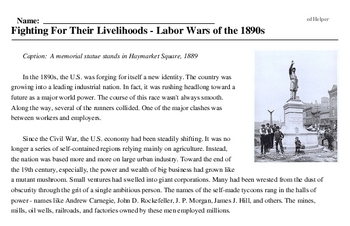Fighting For Their Livelihoods - Labor Wars of the 1890s
Caption: A memorial statue stands in Haymarket Square, 1889
In the 1890s, the U.S. was forging for itself a new identity. The country was growing into a leading industrial nation. In fact, it was rushing headlong toward a future as a major world power. The course of this race wasn't always smooth. Along the way, several of the runners collided. One of the major clashes was between workers and employers.
Since the Civil War, the U.S. economy had been steadily shifting. It was no longer a series of self-contained regions relying mainly on agriculture. Instead, the nation was based more and more on large urban industry. Toward the end of the 19th century, especially, the power and wealth of big business had grown like a mutant mushroom. Small ventures had swelled into giant corporations. Many had been wrested from the dust of obscurity through the grit of a single ambitious person. The names of the self-made tycoons rang in the halls of power - names like Andrew Carnegie, John D. Rockefeller, J. P. Morgan, James J. Hill, and others. The mines, mills, oil wells, railroads, and factories owned by these men employed millions.
For some time, bad blood had been building between big business and the laborers whose sweat greased the wheels of production. Workers wanted better pay and working conditions. When they came together to fight for reform, however, they found legal means blocked. It was rumored that powerful business owners had lawmakers in their pockets. It was one of the reasons these kings of industry and finance were called "robber barons." Another was the business methods of some corporate entities, which included monopolies and price fixing. Many were also accused of robbing employees - paying low wages for long, arduous hours. Workers who lived in areas controlled by the large corporations they worked for were often charged exorbitantly for company housing and other commodities.




